Within the series of visual art projects that pop up like mushrooms after the AFCN funds rainfall, which translates into the usual colloquy and exhibitions, here comes an original initiative by ODD, curated by Cristina Bogdan and Adelina Luft: Who cares?, an artistic exchange between Bucharest and Yogyakarta, the Indonesian University Center.
The name of the project invokes the recently launched publication Who Cares? 16 Essays on Curating in Asia, a book that, among other things, looks at the Heideggerian concept of care. It should probably be noted that, in Heidegger’s terms, care (Sorge) is the essence of man, and man can only exist with the world, open to relationship. Caring requires the other to be taken into account, letting the things of the world be (as an active attitude that requires an understanding of being in and for oneself). Applied to artistic practice by the independent Hong Kong based curator and writer Yeung Yang, the concept will generate the so-called curating as a politics of care, a viable alternative to rigid, institutional curating, and old, detached, objective criticism (it should be noted here that objectivity involves the subject’s cold stance opposed to the object that is being investigated). Consequently, this is what ODD’s team of curators proposed, launching a project in which people, plants, and atmospheric elements overtake trivial artistic production.
And so we arrive at another Heideggerian imperative, namely the redefinition of art as a living social practice, capable of generating and gathering worlds, communities. Whether we find this imperative in the practice of Fluxus and other neo-avanguardists about the outflow of art in the streets, the dematerialization of objects, the separation from the white, elitist and aesthetic cube space, or in the relational aesthetics of Bourriaud, the central idea remains the same concept of authenticity and placement in harmony with alterity (human, animal, plant or even non-living objects approached as agents).
Starting with the same principle of living art that is meaningful to the individual and community, the Who cares? project included two stages, a visit by Romanian artists to Indonesia, followed by the residency of Wimo Ambala Bayang, Adelina Luft and Elia Nurvista in Bucharest. Without implementing any rules or restrictions, the two groups have freely trained in a game of relationship, knowledge, and self-knowledge. The poetic-metaphysical themes and political themes (communism as a pure Indonesian utopia and Romania as a topos for the implementation of an oppressive Ceaușescu-communist regime) were included on the agenda of their artistic research.
If Romanian artists Ștefan Tiron and Vasile Leac put together projects concerning the structure of the cosmos or the elasticity of subjective time in the Indonesian archipelago (one of the few places in the world where arriving one hour late at a meeting is totally non problematic), Wimo Ambala Bayang and Elia Nurvista transformed their residency in Bucharest into an anthropological investigation into the [post]communist condition in Romania. Besides the usual interviews, participatory surveys and photographs, the methods used by Elia and Wimo included an axis of food that circumscribed both a research on nutritional limits and one on the consequential creativity.
As a photographer from a former colonial state, where photography was limited to the cult of portraits, Wimo found a good opportunity to experiment by initiating a political game in which the subjects – the facade of the Romanian Academy, the mini-bust of Ion Creangă, The Arch of Triumph – were re-contextualized in a series of small threads that unmask the nationalist myth in both a communist and a post-communist version.
Combining the old fascination with detention in the Indonesian camps for communist sympathizers (see the tragic events of 1965) with a passion for traditional plants and recipes, Elia initiated a local investigation on the nutritional limits and their resulting creative models of transgression. Among the discoveries, the oldest of us nostalgically recall chicken feet as a star of the Romanian communist menu, as well as the ritual of queuing in long lines. The transformations that took place in the post decade are no less surprising if you think about the mysterious disappearance of said chicken feet from the renowned Obor Square.
I have saved the best for last, the project’s performative dinner which concluded the Bucharest residency. Here, the discussion on cultural and political issues initiated by the curator after the care protocol was followed by an intercultural menu (prepared by Adelina, Elia and Wimo), with appearances by boeuf salad à la Yogyakarta, the Obor rooster comb dish, a pseudo-spinach soup and a well-roasted green lettuce.
One can observe how this dialogue of Indonesian recipes with Romanian ingredients adds to the political layer yet another layer of everyday life in which the plants and dishes become the main characters and agents involved in generating the identity of an individual or a community. In this respect, Who cares? proves to be not just a simple intercultural communication but also a reflection on some recent themes like the post-human or the Object Oriented Ontology paradigm.
One shouldn’t forget, as a crucial element of this unique relational project, the place where the performative dinner took place, at the University Square, a bourgeois apartment with an interwar feel to it, full of massive furniture and frills, wallpaper, paintings, icons and old photographs. In this space, reminiscent of Eliade’s short story At the Gypsies, the Romanian minutes turned into Indonesian rubber hours, time dwindled by allowing artists to enter into an authentic relationship. Imagine how the cigarette smoke and the Dionysian joy invited the so-called Indonesian spirits to join the table, following a script similar to Uncle Boonmee who can remember his previous lives (see another recent Asian success by Thai director Apichatpong Weerasethakul).
In rare moments such as these, we close in on the inaccessible truth of everyday life; art as an artificial paradise allows us to momentarily glimpse the solution for all cares as a settlement in harmony with the other, with the earth and the sky and the spirits. The role of the care curator (caretaker), who is more interested in people, communities, plants, and affections rather than in the production and possession of objects opens the way for a wider role for the individual within the post-human era of accepting alterity. Along with other essential ingredients for potions present at the dinner table, amaranth leaves, a spinach can from the 80’s and rooster comb, the indulgent time of the Orientals (the Indonesian Jam Karet) reveals a re-mixed space where beauty and contemplation paradoxically encounter enthusiasm and political involvement. Spirits whisper about a re-turn of art to man and community, an overcoming of contemporary nihilism (abstract and theoretical) with the re-branding of total art as a postmodern synthesis of Apollonian and Dionysian. The poets dream of re-engaging the audience with the re-invention of the old chain of enthusiasm of inspired art and the performative act that affectively connects the spectator with artists and gods.
Who Cares? takes place during March-November 2018.
POSTED BY
Raluca Oancea
Raluca Oancea (Nestor), member of International Association of Art Critics (AICA) and European Network for Cinema and Media Studies (NECS), is a lecturer at The National University of Arts in Buchares...
www.Dplatform.ro

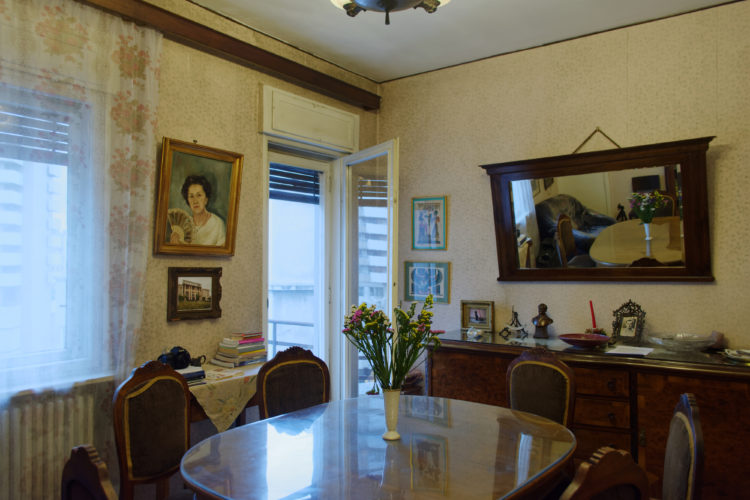
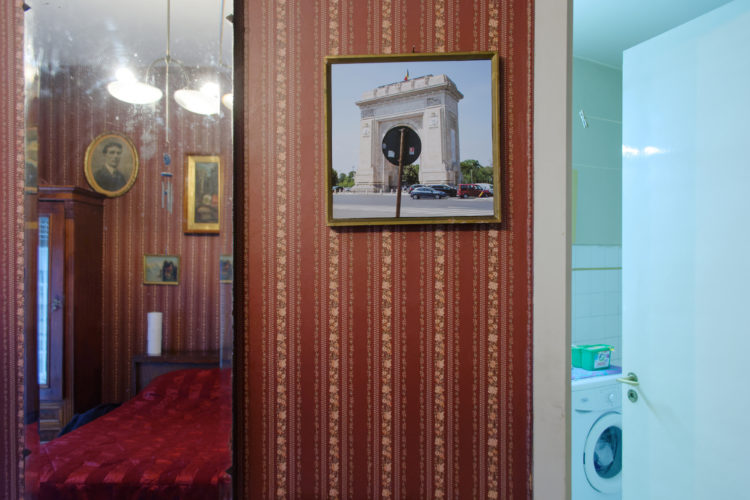
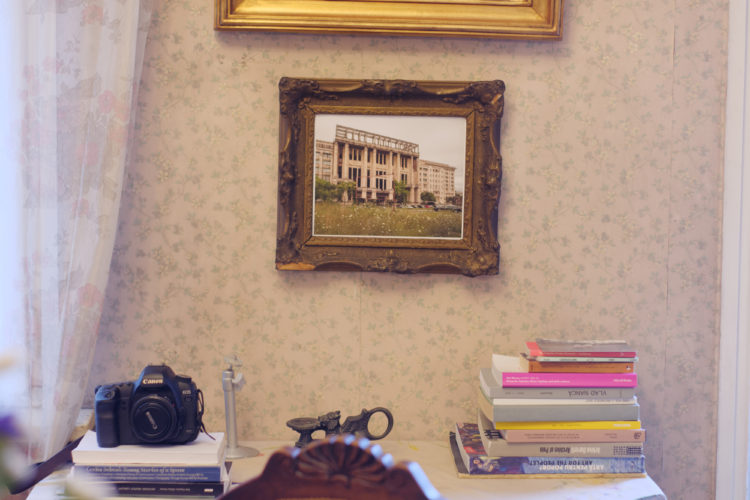
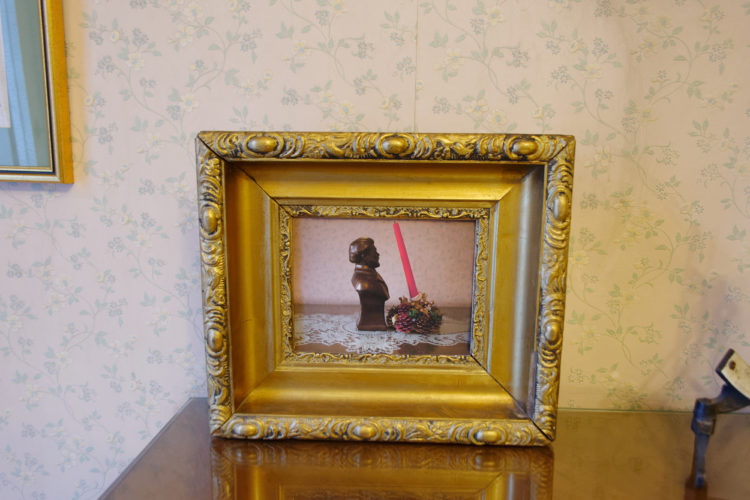
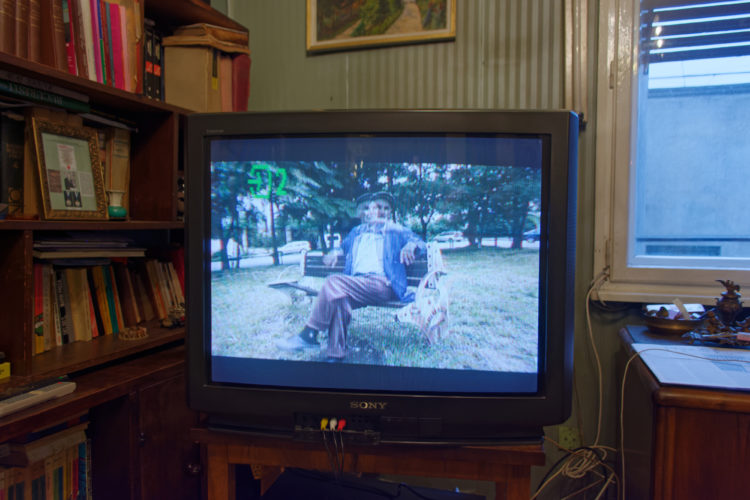
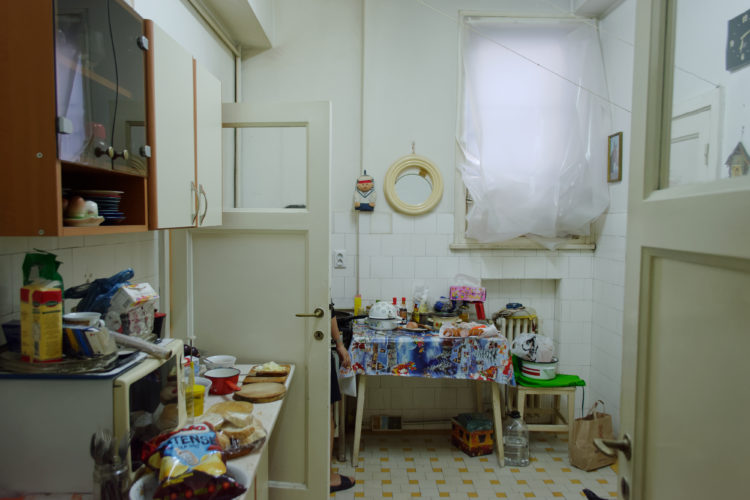
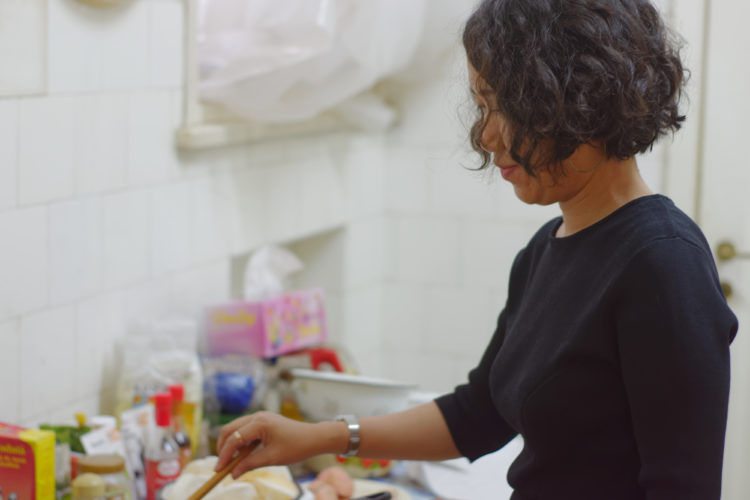
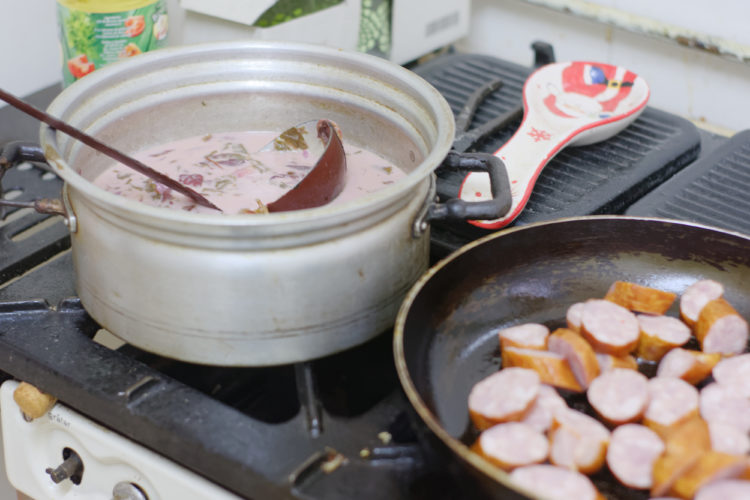
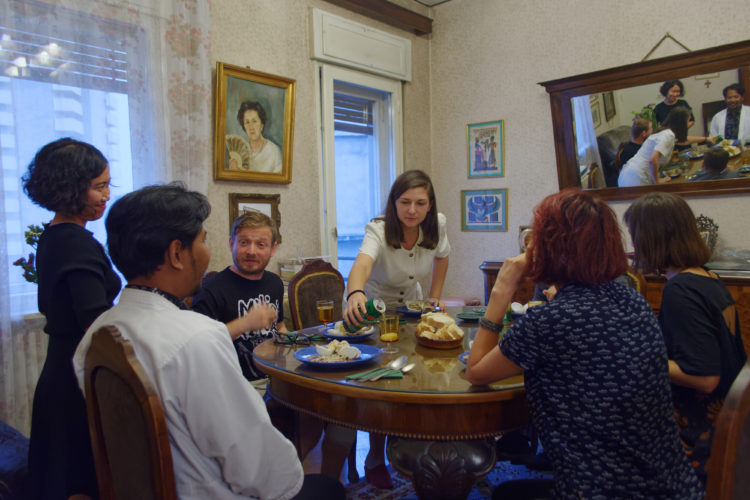
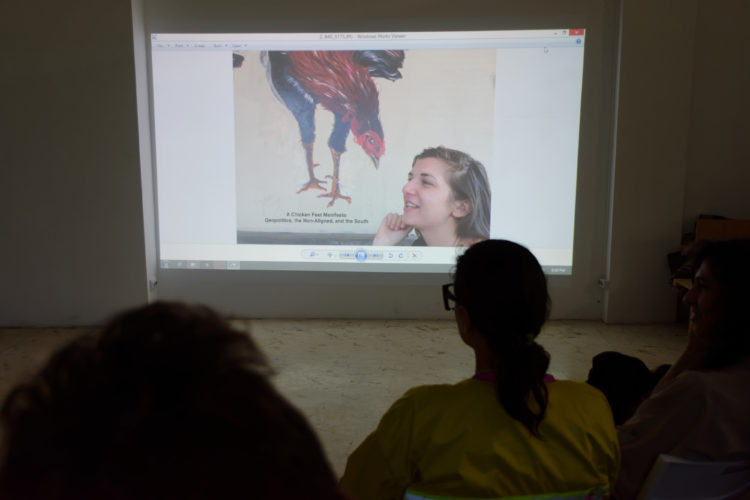
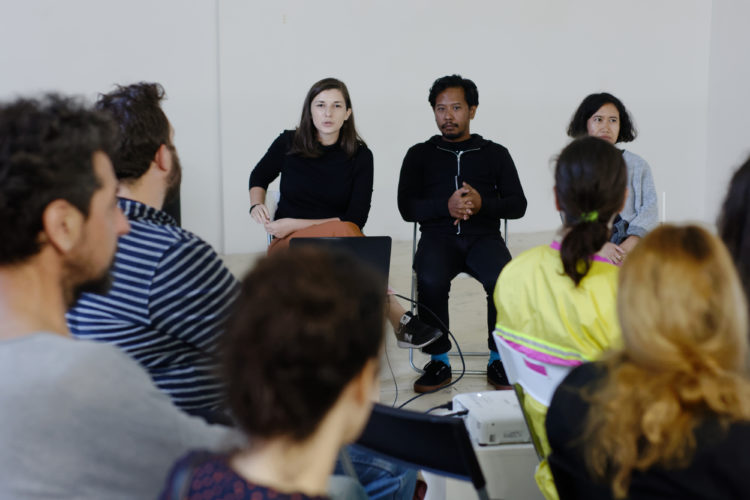
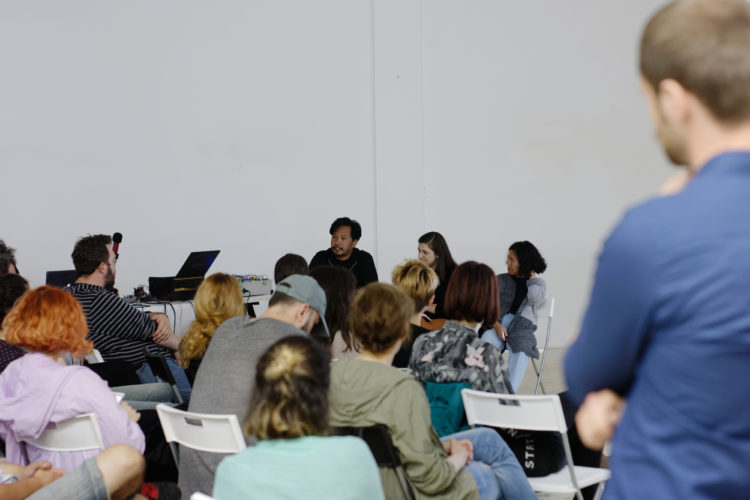
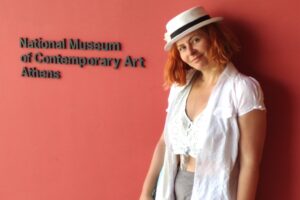
Comments are closed here.